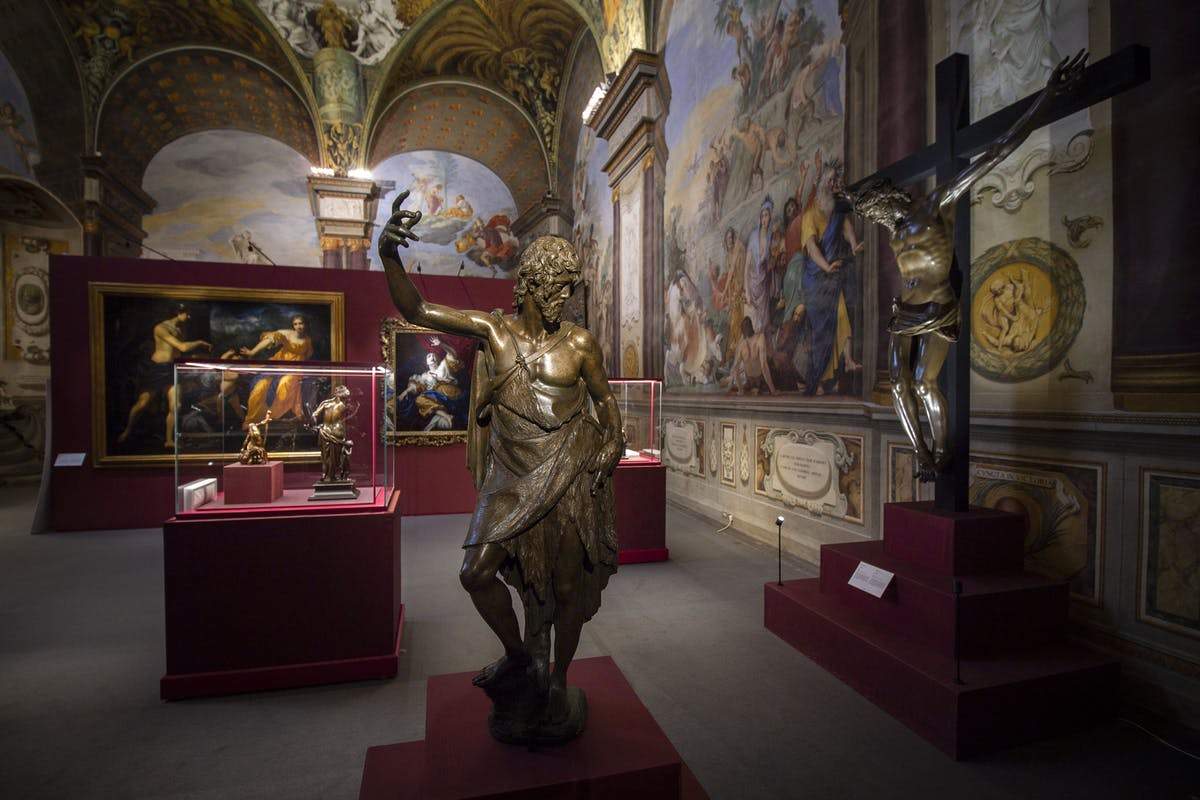Florence, bronze sculpture at the time of the last Medici is on display at Palazzo Pitti
All the energy of Baroque art imprisoned in metal, thanks to the living power of flame: this, in short, is the concept behind the exhibition Plasmato dal fuoco. Bronze Sculpture in the Florence of the Last Medici, on view from Sept. 18, 2019 to Jan. 12, 2020 at the Tesoro dei Granduchi, in the ground-floor spaces of Palazzo Pitti.
There are more than 170 works, with many prestigious loans from international museums, such as the Vatican Museums, the Louvre, the Victoria and Albert in London, the Hermitage in St. Petersburg, the Getty in Los Angeles, the National Gallery of Art in Washington, the Frick Collection in New York, and many others. In the six rooms on the ground floor of the palace, the narrative starts with a small nucleus of works by Giambologna: from the work of this important Flemish sculptor, elected court artist by Francesco I de’ Medici, the great season of Florentine bronzes begins, culminating in the second half of the 17th century with artists famous even outside the Tuscan and national territory such as Giovan Battista Foggini and Massimiliano Soldani Benzi.
The exhibition, curated by Uffizi director Eike Schmidt together with Sandro Bellesi and Riccardo Gennaioli, aims to offer, for the first time, a complete and exhaustive account of bronze sculpture in the Tuscan capital, which reached its peak in the late 17th and early 18th centuries, at the time of the last grand dukes of the house of Medici. Bronze sculpture, along with semi-precious stone commissions, became currency for diplomatic gifts with other European courts, the subject of exchanges of a technical and mercantile nature, and the object of important commissions from the crowned heads and nobility of the continent.
There are many new works that the exhibition announces, starting with Giambologna: by the artist, a previously unseen Venus at the Bath (from a private collection) made for Henry IV of France but never before exhibited to the general public can be admired. Also by Giambologna, the St. John restored for the occasion; also of note is the return from Rome of a group of copies of the ancient statues of Buontalenti’s Tribuna, made in bronze by Foggini with the probable collaboration of Pietro Cipriani. They were rediscovered at the Ministry of Economy and Finance precisely during research for the exhibition, almost 150 years after Quintino Sella brought them with him to Rome. Another important return is that of the sculptural groups once housed right in Palazzo Pitti in the apartments of theElectress Palatina: originally twelve, they were bequeathed by Anna Maria Luisa de’ Medici to relatives, friends and institutions, but over the centuries they were then dispersed to various collections and museums. Now, as many as eleven have been collected and brought together for display within this exhibition, including the last one recognized in 2006 in the royal collections of Madrid.
By Soldani Benzi, one can admire the bronze with the encounter between the infant Jesus and St. John; and still compare his version of the Dancing Faun with the one by Foggini and the one made in Doccia porcelain: in fact, one wants to be reminded of the importance of the local porcelain manufactory in preserving and handing down, in a serial way but always with high results, the forms and models of this great Florentine sculptural season. The sublime technique achieved by the Florentine masters of bronze can still be appreciated in the monstrances, in the rich sacred objects, and in the two Cristi Crocifissi by Giambologna and Pietro Tacca (the celebrated author of the Porcellino as well as Giambologna’s favorite pupil). What’s more, the exhibition displays works by artists such as Giuseppe Piamontini, Giovacchino Fortini, Antonio Montauti, Agostino Cornacchini, Lorenzo Merlini, Girolamo Tacciati, Giovan Camillo Cateni and Pietro Cipriani, and others who emerged from the archives on the occasion of the exhibition, such as Francesco Formigli, a hitherto little-known figure to whom it has been possible to attribute on a documentary basis as many as three works. Completing the exhibition is a collection of forty-two drawings by Soldani Benzi, an extraordinary block of sheets purchased by the Uffizi only a year and a half ago, and a number of paintings, including canvases by Dandini and Bimbi, placed in dialogue with the plasticity of the sculptures.
“It is an extraordinary pleasure to be able for the first time to explore as it deserves this chapter of art history between Florence and Europe, which from the late 16th century onward was crucial to the magnificence of the Medici court,” explains Uffizi director Eike Schmidt. "Through diplomatic gifts, bronze sculptures determined the affirmation of Florentine taste on an international audience and also, within a larger socio-economic network, were the occasion for exchanges of artists and craftsmen, of works and ideas and technical knowledge. The exhibition ’Molded by Fire’ welcomes the visitor to the sublime rooms of the Tesoro dei Granduchi ground floor of the palace at Palazzo Pitti: the setting thus becomes a play of mirrors. Indeed, the glorification of the Medici household frescoed on the vaults and walls seems to amplify the subject matter of Florentine Baroque sculpture, which, with the plastic and dancing energy of bronze, in turn celebrates the inventiveness and magnificent cosmopolitanism of the taste of Florence at the time of the Medici."
For all information you can visit the official website of the Uffizi Gallery.
 |
| Florence, bronze sculpture at the time of the last Medici is on display at Palazzo Pitti |
Warning: the translation into English of the original Italian article was created using automatic tools. We undertake to review all articles, but we do not guarantee the total absence of inaccuracies in the translation due to the program. You can find the original by clicking on the ITA button. If you find any mistake,please contact us.





























